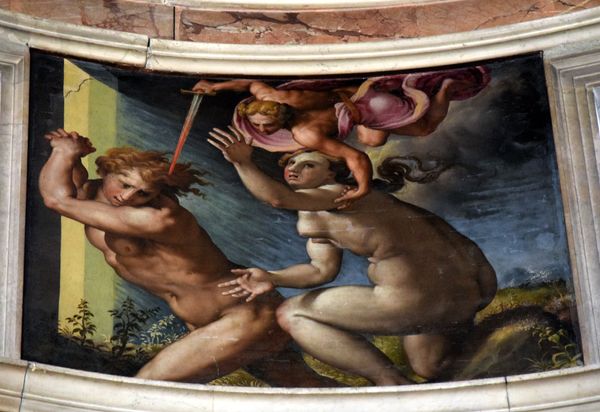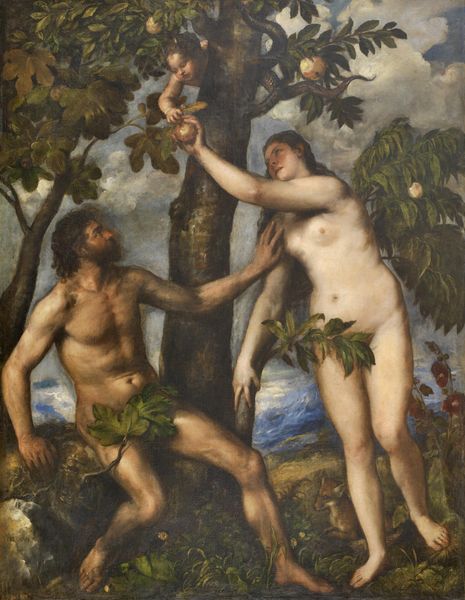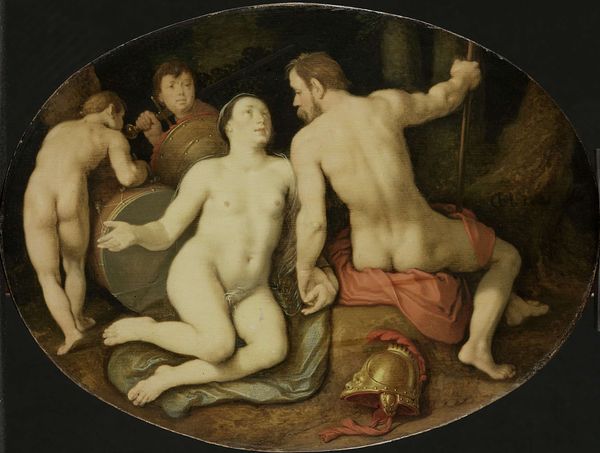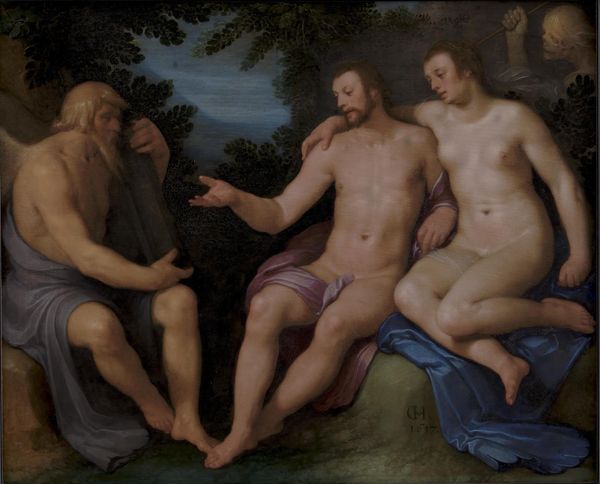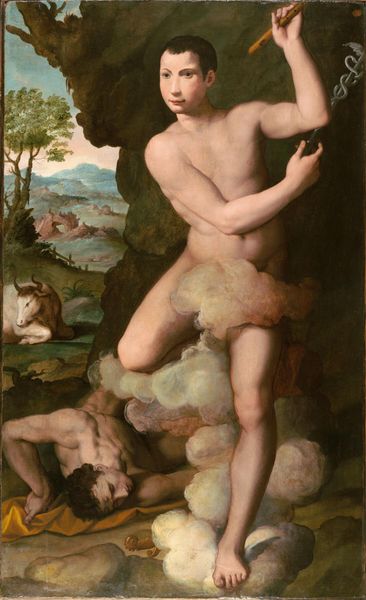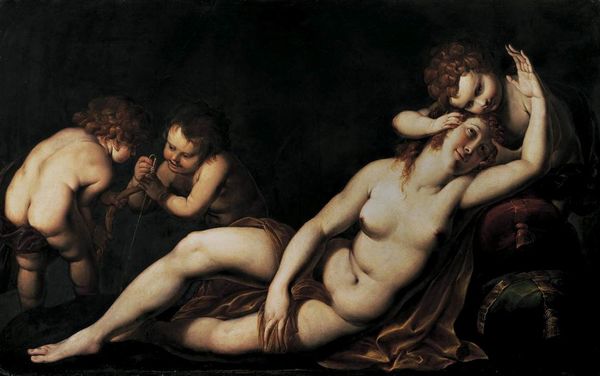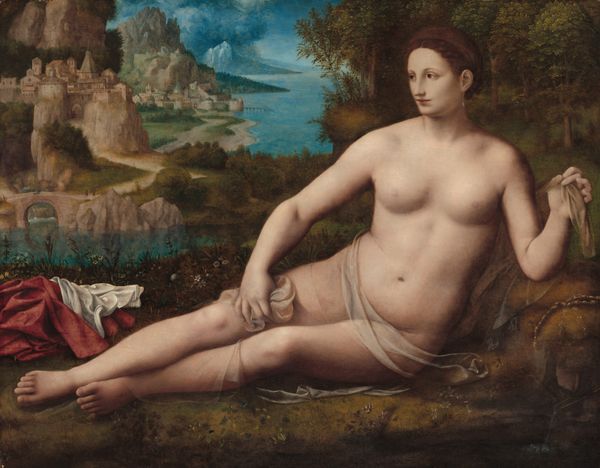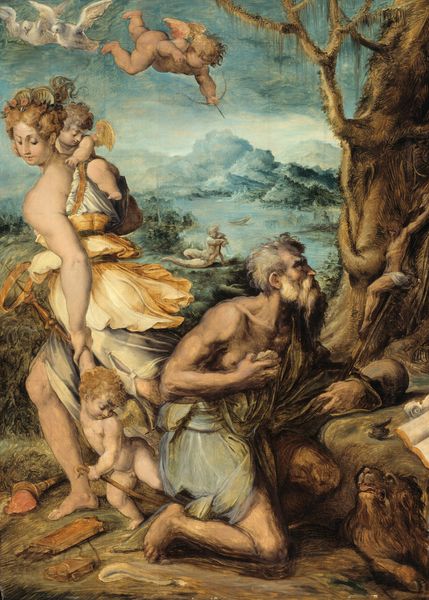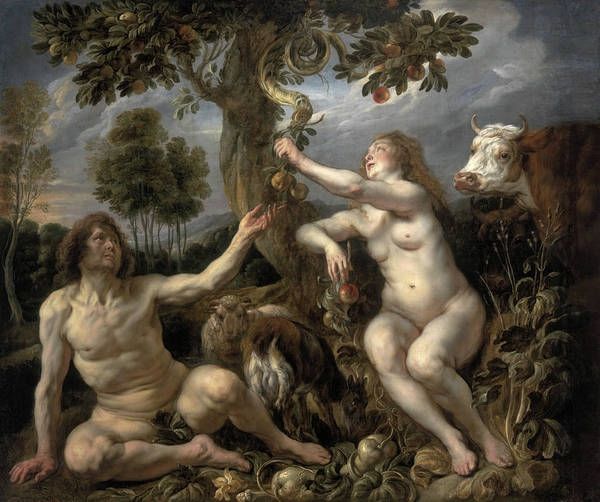
painting, oil-paint
#
allegory
#
painting
#
oil-paint
#
mannerism
#
figuration
#
underpainting
#
mythology
#
painting painterly
#
history-painting
#
nude
#
realism
Copyright: Public domain
Curator: Looking at Francesco Salviati’s "The Original Sin," executed around 1550, I’m struck by how heavy and earthy the figures appear. They don't possess that ethereal, idealized beauty often associated with depictions of Adam and Eve. Editor: Absolutely, and there's a tension here, wouldn’t you say? The figures, while undeniably human, are caught in a web of gazes—they are surveilled, but not completely cognizant of it, implicating power and visibility at this critical point. There’s an uneasiness—an immediate visual interest. Curator: Precisely, it embodies a key theme in Mannerism—distortion and exaggeration to evoke tension. The musculature feels amplified, especially on Adam, yet there’s also a sense of vulnerability. Editor: Considering the time, Mannerism, particularly in its representation of the human form, pushed back against the High Renaissance's balanced classicism. What do you make of the Edenic context depicted? Curator: The scene depicts the pivotal moment of temptation: Eve offers the forbidden fruit to Adam, with a cupid looming nearby who is seemingly influencing Eve, but not quite intervening directly. In this instance it underscores a specific politic, particularly one which understands the concept of divine law. It’s a political claim masked as an allegory. Editor: Let's focus on how Salviati achieves this. The interplay of light and shadow feels strategic. He directs our eye to the figures while the background remains murky and almost forbidding, wouldn't you agree? Curator: Indeed. The formal composition and use of contrast isn't solely aesthetic, but narrative as well, signaling to its Renaissance viewers ideas about temptation, power, gender, and social relationships. Editor: Fascinating to consider the historical context influencing not only the choice of subject matter, but the technical execution of the work. Curator: Indeed. A reminder that "Original Sin," and its varied interpretations, still permeate cultural narratives today. Editor: And hopefully we've provided new insight to consider how artistic choices underscore particular politics.
Comments
No comments
Be the first to comment and join the conversation on the ultimate creative platform.
